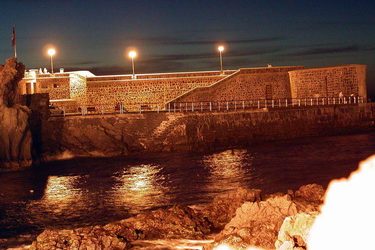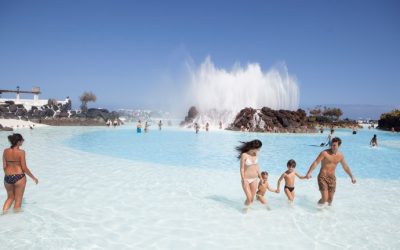últimas noticias
Sigue nuestros contenidos
Marquesa Hotel
Es uno de los hoteles más antiguos de la ciudad. La casona canaria que lo alberga, y que conserva en gran parte su estructura original, se construyó en 1712 como sede de las Casas Principales o casa solariega de la familia Valois-Cólogan. En esta casa se alojaron...
Hotel Marquesa
This is one of the oldest hotels in town. The Canary mansion which houses it and which still retains large parts of its original structure was built in 1712 as the main home of the Valois-Cólogan family. The house provided lodging for the famous travellers and...
Lime Kilns at Las Cabezas
Now renovated and turned into a public park, this group of buildings dates from the end of the XVIIIth Century. It consists of three vaulted buildings for industrial use, which in their day served to produce plaster of Paris and lime, basic building materials. The...
Hornos de Cal de Las Cabezas
Este conjunto arquitectónico restaurado y convertido en parque público en la actualidad, data de finales del siglo XIX. Consiste en tres edificaciones abovedadas de uso industrial que en su época sirvieron para la obtención de yeso y cal, materiales que eran básicos...
Ermita de San Amaro
La ermita de San Amaro, la más antigua del municipio. Construida en 1591, su función originaria fue la cristianización de unos lugares de profundo valor espiritual para la población aborigen como eran el “Llano del Bailadero” y la necrópolis de la “Ladera de...
Chapel of San Amaro. [Saint Amarus]
The chapel of San Amaro, the oldest in the Municipality, was built in 1591 and its original function was to convert to Christian use the places which had a deep spiritual significance for the aborigines, such as the Llano del Bailadero [heathen dancing ground] and the...
El Peñón del Fraile [Friar’s Crag]
This is one of the town’s symbols, a gigantic volcanic rock, a product of the eruptions of 1430 and which owes its name to a friar who, in the early part of the XVIIIth Century, climbed up to pray in isolation. In 1813, the Genoese Luis Lavaggi, on a whim, decided to...
El Peñón del Fraile
Es uno de los símbolos de la ciudad. Esta gigantesca roca volcánica, producto de las erupciones de 1430, debe su nombre a un fraile que a comienzos del siglo XVIII ascendía con frecuencia a lo alto de la roca para aislarse en oración. El genovés Luis Lavaggi tuvo el...
El Penitente
El embarcadero de El Penitente fue la última oportunidad del Puerto de la Cruz de mantener sus exportaciones marítimas tanto a nivel interinsular como internacional. En un momento en que la infraestructura vial de la isla de Tenerife había mejorado notablemente con la...
El Penitente
The wharf at El Penitente was Puerto de la Cruz’ last chance to keep its sea trade, whether between the Islands or abroad. At a time when the road system of Tenerife had improved markedly as a result of the building of the main road linking Santa Cruz and Puerto de la...
The Martiánez Coast Swimming Pool Complex
The real emblem of Puerto de la Cruz for tourists is the Martiánez Coast Municipal Complex, a modern, inviting arrangement of large, artificial sea-water pools designed in a superbly original manner, integrating them in their environment , by the Lanzarote artist...
Complejo Turístico Municipal Costa de Martiánez
El auténtico emblema turístico de Puerto de la Cruz es el Complejo Municipal ‘Costa de Martiánez’, un moderno y confortable conjunto de grandes piscinas artificiales de agua de mar diseñado con un originalísimo estilo arquitectónico integrador por el artista...
CIT Puerto de la Cruz
Trabajamos con la vocación de crear un atractivo turístico y cultural




![El Peñón del Fraile [Friar’s Crag]](https://citpuertodelacruz.com/wp-content/uploads/2017/09/penon-280x250.jpg)

